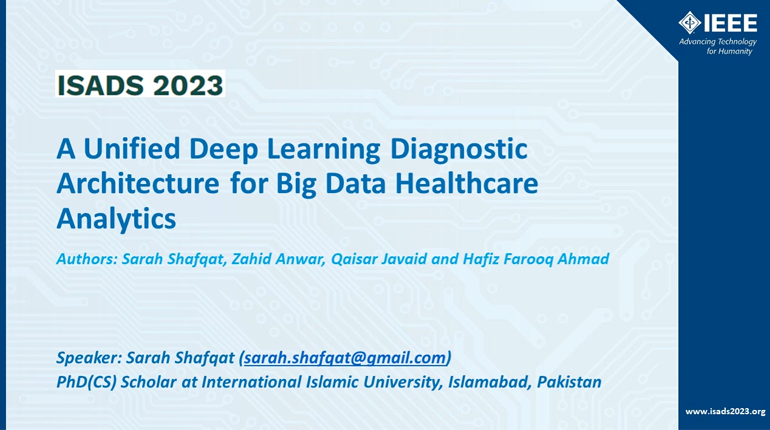 A Unified Deep Learning Diagnostic Architecture for Big Data Healthcare Analytics
A Unified Deep Learning Diagnostic Architecture for Big Data Healthcare Analytics

A Unified Deep Learning Diagnostic Architecture for Big Data Healthcare Analytics
Healthcare automation is evolving rapidly as can been seen in the recent popularity of e-health or digital health systems. The massive amount of health related data produced by these systems has given rise to the fields of health informatics. The World Health Organization (WHO) decomposes SMARThealth as Standards-based, Machine-readable, Adaptive, Requirements-based, and Testable, and provides guidelines for digital health. Heterogeneous big data health flows into the cloud requires considerations for uniformity of structure to allow for interoperability and generalizability in universal use and analysis. This research proposes a deep-learning architecture for disease diagnosis that considers Diabetes Mellitus as a case study. Three corpuses containing DM patient data are considered which are prepared and processed using extensive data warehousing techniques and labeled with ICD-10-CM diagnostic codes. Extraction of desired health data is through a unified data model for healthcare that is in compliance with HL7 FHIR v4.0 schema. Our contributions are two-fold: First, three big data cloud analytical models are proposed and validated on the unified corpora and second the maximum possible diseases specific to a single or multiple DM patients have been diagnosed with a 100% accuracy using deep multinomial/multi-label distribution learning (DMDL).
Healthcare automation is evolving rapidly as can been seen in the recent popularity of e-health or digital health systems. The massive amount of health-related data produced by these systems is transforming e-health to SmartHealth.
 Cart
Cart Create Account
Create Account Sign In
Sign In






